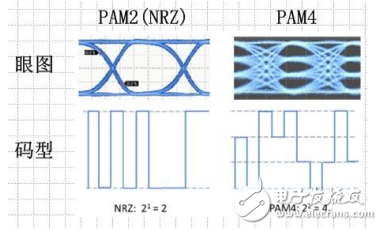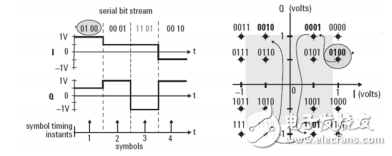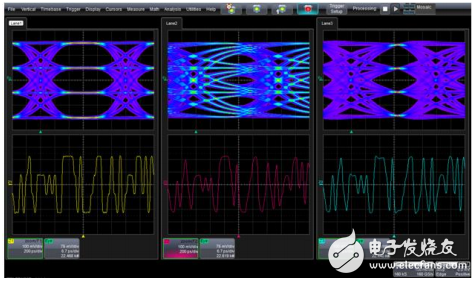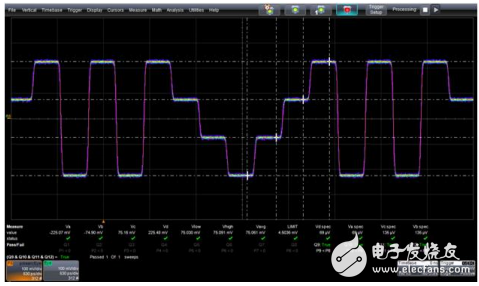How to test PAM4 signal
With the growing demand for big data, the bandwidth requirements of core networks have significantly increased each year. As a result, transmission technologies must continue to evolve to meet these market needs. Currently, the main approaches to further enhance bandwidth include increasing the signal rate, expanding the number of transmission links, and boosting the amount of information transmitted within the same time window—such as carrying more data packets per symbol. One effective method for achieving this is through PAM4 (Pulse Amplitude Modulation) signaling.
This article introduces the basic concepts of PAM4 and explores how to test PAM4 signals. First, we compare NRZ and PAM4 patterns. Figure 1 below illustrates the eye diagrams of both NRZ and PAM4. The NRZ code uses two levels, while PAM4 uses four. In essence, PAM4 can be viewed as the combination of two NRZ signals. Each NRZ symbol carries one bit, whereas a PAM4 symbol contains two bits.

**Figure 1: NRZ Pattern and PAM4 Pattern**
Second, we explore the application of PAM4 in high-speed Ethernet and coherent optical communication. In high-speed Ethernet, such as the 100Gb/s Ethernet standard (802.3bj), both NRZ and PAM4 can be used. However, due to the limited bandwidth of copper media, using NRZ may not achieve very high data rates. PAM4, on the other hand, allows two bits to be transmitted per symbol, effectively doubling the data throughput at the same symbol rate. That said, PAM4 is more sensitive to noise and requires careful design to maintain signal integrity.
In coherent optical communication, PAM4 plays a crucial role. For example, in 100GbE systems, the optical signal is typically generated using QPSK (Quadrature Phase Shift Keying) modulation. This involves combining four 25 Gbps NRZ signals into two polarizations (X and Y), where each polarization modulates the I and Q components. This results in a DP-QPSK (Dual-Polarization Quadrature Phase Shift Keying) signal, which is widely used in modern optical communications.

**Figure 2: Basic Block Diagram of 100G DPQPSK Coherent Optical Communication**
QPSK is a phase modulation technique that encodes two bits per symbol by using four distinct carrier phases. These phases are typically set at 45°, 135°, 225°, and 315°. The binary input is grouped into pairs, and each pair corresponds to one of the four symbols. This approach allows efficient use of the available bandwidth.
Similarly, PAM4 can be used as a baseband modulation format for higher-order schemes like 16QAM. In 16QAM, both the I and Q components carry 4-level PAM4 signals, allowing each symbol to represent 4 bits. This increases the data density and is commonly used in high-speed optical and wireless communication systems.

**Figure 4: Transmission and Constellation Diagram of 16QAM Modulated Signal**
Finally, testing PAM4 signals is essential to ensure signal quality and system performance. Teledyne LeCroy has developed a comprehensive PAM4 test solution that integrates with their high-bandwidth oscilloscopes. This package includes features such as clock recovery, eye diagram analysis, jitter and noise measurement, level analysis, and BER prediction.

**Figure 6: Multi-link PAM4 Signal Eye Diagram Test**

**Figure 7: PAM4 Signal Level Test**
These tools help engineers analyze and optimize PAM4 signals, ensuring reliable performance in high-speed communication systems.
Xlr Connector,Xlr Female Speaker Cable,Speakon Xlr Male Cable,Speakon Male Xlr Female Cable
Changzhou Kingsun New Energy Technology Co., Ltd. , https://www.aioconn.com